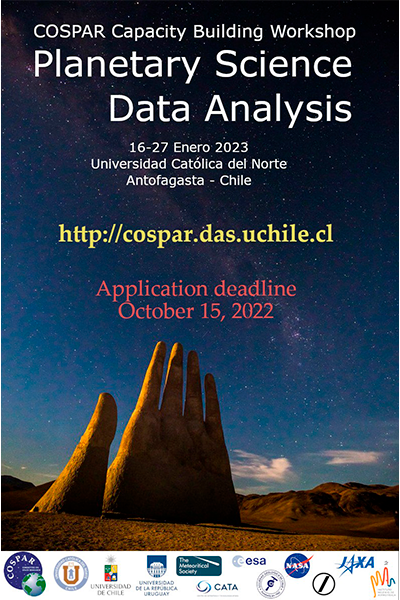[:en]
Star clusters meeting 2017
Santiago, March 2-3, 2017
 Stellar populations in stellar clusters and dwarf galaxies – new astronomical and astrophysical challenges
Stellar populations in stellar clusters and dwarf galaxies – new astronomical and astrophysical challenges
This workshop is open to all astronomers and students, especially those in Chilean institutes. The goal is to put together experts in the field to discuss and eventually collaborate. We strongly encourage the participation of advanced students. We expect a maximum of 50 participants.
Scientific rationale
Globular clusters are no longer a proxy for a single stellar population. High-precision photometric and spectroscopic observations have been revealing multiple generations in Milky Way and extragalactic old and young massive clusters. The connection with global parameters (mass, age, environment, chemical and dynamical evolution history of the host galaxy) is not clear. On one side, observers are carrying out surveys to collect more information in the Milky Way and Local Group galaxies, e.g. VVV, Gaia-ESO, APOGEE, GOTHAM etc. And on the other side, theoreticians are trying to make sense of all pieces of observations. Both sides together are trying to solve the puzzle of how star clusters form and evolve, and its connection with the host galaxy.
Among some questions we would like to address during these two days are:
Are massive young clusters the prototypes of future globular clusters? What is missing in stellar evolution models, in particular of evolved stars such as those in AGB and HB phase? What is the relation between stars in clusters and dwarf galaxies, and stars in the Galactic halo and bulge? What is the fraction of Galactic clusters formed in situ and those formed in dwarf galaxies captured by the Milky Way? What are the differences and similarities between star clusters in the Milky Way and Local Group galaxies? How can star clusters be used as tracers of the chemical and dynamical evolution history of their host galaxy? What is the best instrumental complement that is needed to answer these questions?
Conference email: starclusterschile2017@eso.org
[:es]
Star clusters meeting 2017
Santiago, March 2-3, 2017
 Stellar populations in stellar clusters and dwarf galaxies – new astronomical and astrophysical challenges
Stellar populations in stellar clusters and dwarf galaxies – new astronomical and astrophysical challenges
This workshop is open to all astronomers and students, especially those in Chilean institutes. The goal is to put together experts in the field to discuss and eventually collaborate. We strongly encourage the participation of advanced students. We expect a maximum of 50 participants.
Scientific rationale
Globular clusters are no longer a proxy for a single stellar population. High-precision photometric and spectroscopic observations have been revealing multiple generations in Milky Way and extragalactic old and young massive clusters. The connection with global parameters (mass, age, environment, chemical and dynamical evolution history of the host galaxy) is not clear. On one side, observers are carrying out surveys to collect more information in the Milky Way and Local Group galaxies, e.g. VVV, Gaia-ESO, APOGEE, GOTHAM etc. And on the other side, theoreticians are trying to make sense of all pieces of observations. Both sides together are trying to solve the puzzle of how star clusters form and evolve, and its connection with the host galaxy.
Among some questions we would like to address during these two days are:
Are massive young clusters the prototypes of future globular clusters? What is missing in stellar evolution models, in particular of evolved stars such as those in AGB and HB phase? What is the relation between stars in clusters and dwarf galaxies, and stars in the Galactic halo and bulge? What is the fraction of Galactic clusters formed in situ and those formed in dwarf galaxies captured by the Milky Way? What are the differences and similarities between star clusters in the Milky Way and Local Group galaxies? How can star clusters be used as tracers of the chemical and dynamical evolution history of their host galaxy? What is the best instrumental complement that is needed to answer these questions?
Conference email: starclusterschile2017@eso.org
[:]










